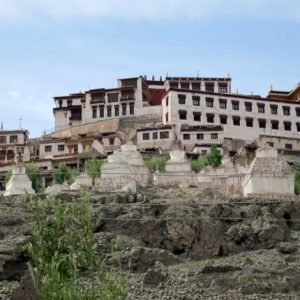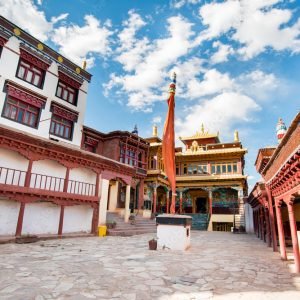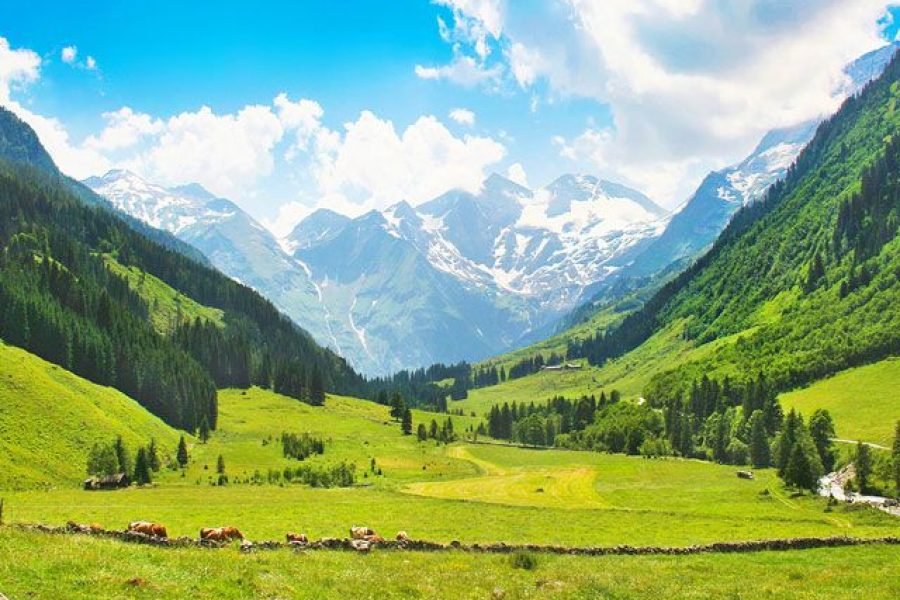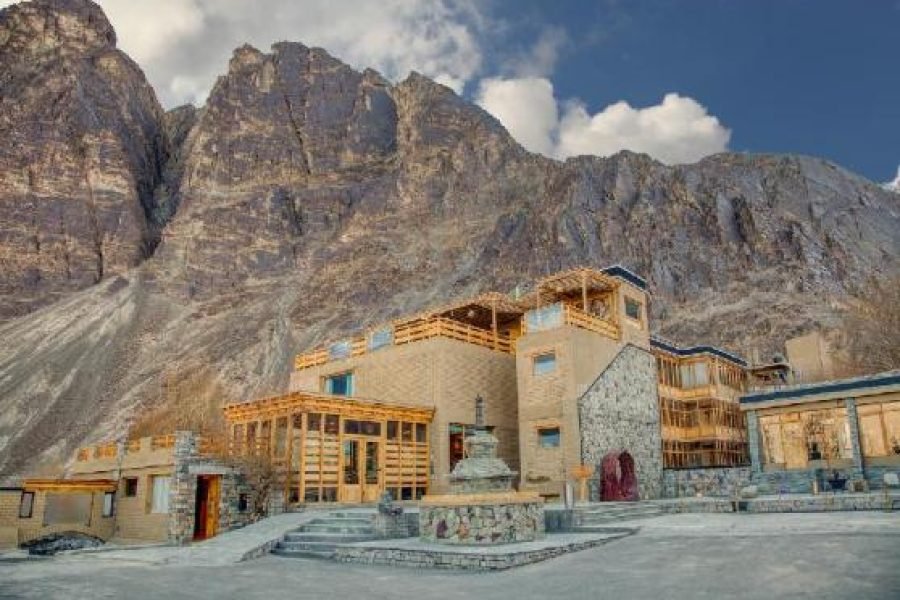Matho Monastery : A Hidden Buddhist Treasure in Ladakh





Table of Contents
ToggleIn the rugged terrains of Ladakh, Matho Monastery stands as a beacon of spiritual serenity and historical significance. At an altitude of some 3,500 meters (11,500 feet), it offers a glimpse into Ladakh’s richest cultural and religious heritage in this Buddhist monastery. This detailed blog goes deeply into the history, architecture, culture, festivals, and why it has always been a must-visit destination for travelers and those spiritual seekers who visit the place.
Introduction to Matho Monastery
Matho Monastery is one of the oldest and most respected Buddhist monasteries in Ladakh, about 26 kilometers from Leh, the capital of the region. This monastery belongs to the Sakya sect of Tibetan Buddhism and dates back over 500 years. It sits on the crest of a hill, with a view of the more general landscape panorama. The Indus River Valley lies on view. It is very quiet and has majestic location qualities that make Matho a peaceful retreat from meditation and contemplation.
The monastery is a spiritual center but also a historical landmark that represents the deep-rooted Buddhist culture of Ladakh. The site is believed to have been founded by Lama Sherab Zangpo, who was a prominent figure in the Sakya school of Tibetan Buddhism. Today, the monastery is a major pilgrimage site for Buddhists and an important cultural hub in Ladakh.
History of Matho Monastery
The history of Matho Monastery dates back to the 14th century. The monastery was founded in 1370 by a great Tibetan lama named Lama Sherab Zangpo. According to the local beliefs, the 11th-century Indian scholar and saint Naropa had foretold that he would build the monastery in Ladakh. The prophecy of the great Lama Sherab Zangpo arrived in Ladakh after getting a vision and established this monastery in the sacred site.
It had the Matho Monastery, which contributed largely to the spread of Buddhism in Ladakh. This religious site had been an essential spiritual center for thousands of years. It was a great place for the sanctification of relics and by monks in the maintenance of older traditions of Tibetan Buddhism.
The monastery has been enlarged and renovated over the years. Its current structure-although retaining its age-old design-bears also the imprint of modern construction practices. Natural disasters as well as unstable politics have been unable to halt the dynamism of this symbol of resilience, spirituality, and power of faith in Matho Monastery.
Architecture of Matho Monastery
The architectural style of Matho Monastery is a characteristic feature representing the unique coming together of Tibetan and Ladakhi cultures. The monastery has a typical architectural layout of a Tibetan Buddhist monastery with multiple prayer halls, shrines, and living quarters for the monks. The building style is typically Ladakhi, designed to withstand the extreme winter conditions, with thick stone walls and sloping roofs.
Truly astounding and beautiful are its colorful, intricate murals and thangkas, or Buddhist paintings on cloth, which describe the life of the Buddha along with a plethora of deities and Bodhisattvas. The colors are brilliant, and the imagery equally detailed in the use of which the Buddhist philosophy would be taught.
The prayer hall contains a beautiful statue of the Buddha, along with images of important Buddhist saints and figures. The courtyard surrounding this hall provides a peaceful place for meditation and prayer, combined with prayer wheels and stone carvings that can contribute to the atmosphere.
The Ngakpa or spiritual leaders are also a prominent feature of the architecture at Matho Monastery. The monastery stands highly associated with the Sakya lineage, and the monks are spiritual guides who lead prayers, rituals, and teachings. The meditation caves surrounding the monastery are areas of intense spiritual practice by monks.
Culture and Spirituality at Matho Monastery
Matho Monastery is not only a home but also a living example of spirituality that conquers Ladakh. The monastery accommodates about 60 monks who follow the tradition of the Sakya sect. The monks are busy in religious activities, such as prayer, meditation, and reading sacred Buddhist texts. However, the monastery has also turned out to be an educational institution for young monks who come here to learn about Buddhism, philosophy, and Tibetan rituals.
The monks of Matho Monastery lead a disciplined and serene life, deeply engaged in the practice of compassion, mindfulness, and devotion. Visitors to the monastery often get the opportunity to see the monks chanting prayers, performing rituals, and practicing the traditional art of Thangka painting. The peaceful atmosphere and the dedication of the monks create a deep sense of spiritual presence, which attracts people from all walks of life.
Matho Monastery is also an important cultural center, where traditions of Ladakhi festivals and rituals are performed. Here, the spiritual and cultural traditions of Ladakh are preserved and transferred to future generations. The monastery plays an essential role in keeping the cultural heritage of Ladakh alive through religious practices, festivals, and educational programs.
Festivals at Matho Monastery
Matho Monastery is also famous for its colorful and special festivals. The most famous festival is the Matho Monastery Festival, which falls in February or March of every year. It is a grand celebration of Ladakhi culture, religion, and tradition, which both locals and tourists attend.
Matho Monastery Festival
The Matho Monastery Festival is held in the name of the sacred oracles of the monastery, which are believed to have divine powers. The festival is characterized by a series of rituals, prayers, and ceremonies that reflect the rich spiritual heritage of the monastery. One of the most fascinating aspects of this festival is the oracle ritual, where two oracles, known as Lamas, enter into a trance and communicate with deities to offer guidance and predictions for the coming year.
Additionally, there is traditional Ladakhi music, dance, and costumes. Monks perform elaborate masked dances known as Cham, which are Tibetan Buddhist tradition and symbolize good winning over evil with the accompaniment of the traditional drumming and chanting. The Matho Monastery Festival is a colorful and lively event to experience the spiritual and cultural richness of Ladakh.
Losar Festival
Another significant festival celebrated here is the Losar Festival, which falls within the Tibetan New Year. Losar is quite joyously celebrated by all with much enthusiasm, where families gather together, pray, and carry out festive work. In Matho Monastery, the monks perform specific prayers, pujas (rituals), and rituals as the ushering of the new year with prosperity and good fortune.
The festival is also an opportunity for the community to celebrate their common heritage by donning traditional attire, preparing special foods, and participating in prayers and offerings by the local people. Losar is a time of renewal and spiritual cleansing and thus one of the most important events in the Ladakhi calendar.
Things to Do at Matho Monastery
A visit to Matho Monastery is a very enriching experience for those interested in exploring Ladakhi culture, spirituality, and history. Some of the activities and experiences you can enjoy while visiting the monastery include the following:
- Meditation and Reflection
Matho Monastery is a very peaceful place that is ideal for meditation and reflection. The serene surroundings, along with the quiet atmosphere, offer an excellent chance to disconnect from the bustle of daily life and engage in self-reflection. Visitors can sit in the monastery’s courtyard or inside the prayer hall to meditate and connect with their inner selves.
- Witnessing Monastic Life
A visit to the monastery offers a unique opportunity to witness the daily life of the monks. You can observe them performing rituals, chanting prayers, and engaging in discussions on Buddhist philosophy. The monks’ devotion and discipline are inspiring and offer a glimpse into the deep spiritual practices of Tibetan Buddhism.
- Learning about Buddhism
Matho Monastery is ideal for getting information on Buddhism and Sakya philosophies. The monks are wise and ready to share their views of Buddhist philosophies, meditation techniques, and Tibetan rituals. Visitors can share their thoughts with the monks or attend lectures and teachings on Buddhism.
- Ladakhi Culture Exploration
Matho Monastery is an important cultural hub in Ladakh, and visiting it offers a chance to explore the rich Ladakhi culture. From the traditional architecture to the vibrant festivals, Matho Monastery provides a window into the way of life in this remote region of India. You can also visit the nearby villages and interact with the locals to learn more about their customs and traditions.
- Photography and Scenic Views
The location of the monastery offers breathtaking views of the Indus River Valley and the surrounding mountains. Photography lovers will find many opportunities to get great shots of the stunning landscapes and the beautiful architecture of the monastery. The colorful murals, thangkas, and religious artifacts are good subjects for photography as well.
How to Reach Matho Monastery
It is easy to reach Matho Monastery since it is only 26 kilometers from Leh, the capital of Ladakh. Leh has good connectivity by air to major cities in India. From Leh, one can hire a taxi or even take a local bus to the monastery. The road is quite well-maintained and has wonderful scenic views of the Ladakhi landscape.
If you are visiting during the winter months, be prepared for cold weather and check road conditions, as snow can sometimes block the paths. The best time to visit Matho Monastery is during the summer months, from May to September, when the weather is pleasant, and most festivals take place.
Conclusion
Matho Monastery is a hidden gem in Ladakh, offering a unique blend of spirituality, history, and culture. Whether you are a spiritual seeker, a history enthusiast, or a traveler looking to explore the rich heritage of Ladakh, Matho Monastery is definitely not to be missed. The destination has ancient architecture, vibrant festivals, and serene atmosphere that allows visitors to connect to the timeless traditions of Tibetan Buddhism and experience the beauty of the Himalayas. A visit to Matho Monastery is more than mere sightseeing; it’s a living among the Ladakhi essence of spirituality and culture.
FAQ's
1. What is Matho Monastery known for?
Matho Monastery is famous for its rich cultural and spiritual heritage, belonging to the Sakya sect of Tibetan Buddhism. It is particularly known for its serene environment, historical significance, and vibrant annual festival, the Matho Monastery Festival.
2. Where is Matho Monastery located?
Matho Monastery is located in Ladakh, India, about 26 kilometers southeast of Leh, the capital city of Ladakh. It is situated at an altitude of 3,500 meters, on a hilltop overlooking the Indus River Valley.
3. How old is Matho Monastery?
Matho Monastery was founded in 1370 by Lama Sherab Zangpo, making it over 650 years old. It is one of the oldest monasteries in Ladakh.
4. What sect does Matho Monastery belong to?
Matho Monastery belongs to the Sakya sect of Tibetan Buddhism, one of the four major schools of Tibetan Buddhism.
5. What is the significance of the Matho Monastery Festival?
The Matho Monastery Festival is a key religious and cultural event held annually to honor the monastery’s sacred oracles. The festival includes masked dances, rituals, and prayers, and it is famous for the oracle trance, where oracles communicate with deities.
6. What is the Matho Monastery Oracle?
The Matho Monastery Oracle is a spiritual practice in which two oracles, known as Lamas, enter into a trance during the festival. These oracles are believed to have the ability to predict the future and offer divine guidance.
7. When is the Matho Monastery Festival held?
The Matho Monastery Festival is typically held in February or March, depending on the lunar calendar. It is celebrated to mark the start of the new year according to the Tibetan Buddhist tradition.
8. How can I reach Matho Monastery?
Matho Monastery is 26 kilometers from Leh, the capital of Ladakh. You can reach Leh by air from major Indian cities, and from Leh, you can hire a taxi or use public transport to reach the monastery.
9. What is the best time to visit Matho Monastery?
The best time to visit Matho Monastery is from May to September, when the weather is pleasant and favorable for travel. During this period, the monastery and surrounding landscapes are easily accessible.
10. Can I stay at Matho Monastery?
While there are no dedicated guesthouses within the monastery itself, there are several accommodation options nearby in Leh. You can also find homestays or guesthouses in the surrounding villages.
11. Is Matho Monastery open to tourists?
Yes, Matho Monastery is open to tourists, and visitors are welcome to explore its architecture, observe the daily rituals, and participate in festivals. However, it is advised to be respectful of the religious practices and culture.
12. What is the architecture of Matho Monastery like?
The architecture of Matho Monastery is typical of Tibetan Buddhist monasteries, with prayer halls, shrines, and living quarters. The monastery is known for its intricate murals, thangkas (paintings), and a beautiful statue of Buddha.
13. What festivals are celebrated at Matho Monastery?
Apart from the Matho Monastery Festival, the Losar Festival (Tibetan New Year) is also celebrated with great enthusiasm. During Losar, the monks perform special prayers and rituals, and there are festive celebrations within the monastery.
14. Can I observe the monks’ daily life at Matho Monastery?
Yes, visitors can observe the monks’ daily life, including prayers, rituals, and teachings. Visitors are encouraged to be respectful and mindful of the spiritual atmosphere.
15. What is the best way to experience Matho Monastery’s spirituality?
The best way to experience Matho Monastery’s spirituality is by participating in meditation sessions, attending the prayers, and observing the monks during rituals. The serene environment also offers a perfect setting for personal reflection and inner peace.
16. Are there meditation opportunities at Matho Monastery?
Yes, Matho Monastery offers opportunities for visitors to meditate in its tranquil surroundings. You can sit in the monastery’s prayer hall or courtyard to engage in your practice.
17. How many monks live at Matho Monastery?
Matho Monastery is home to approximately 60 monks who practice Tibetan Buddhism and follow the teachings of the Sakya sect.
18. What is the significance of the murals at Matho Monastery?
The murals at Matho Monastery are significant as they depict Buddhist deities, saints, and scenes from the Buddha’s life. These vibrant and intricate works of art serve as a means of conveying Buddhist teachings and philosophies.
19. Can tourists take photographs at Matho Monastery?
Yes, tourists can take photographs at Matho Monastery, but they should always seek permission before photographing the monks during religious ceremonies and be respectful of the sacred environment.
20. What should I wear when visiting Matho Monastery?
When visiting Matho Monastery, it is advisable to wear modest and respectful clothing. Long pants and covered shoulders are appropriate. Additionally, remove your shoes before entering the prayer halls.
21. What is the significance of thangkas at Matho Monastery?
Thangkas at Matho Monastery are important works of art that portray religious figures, deities, and Buddhist teachings. These paintings are used for spiritual meditation and are an integral part of Tibetan Buddhist rituals.
22. Can I participate in the Matho Monastery Festival?
While tourists can attend the festival, participation in the religious ceremonies and rituals is typically reserved for the monks and locals. However, visitors can enjoy the festivities, including the Cham dances and masked performances.
23. Is Matho Monastery accessible by road?
Yes, Matho Monastery is accessible by road from Leh. The road is well-maintained, and the journey offers beautiful views of the surrounding landscapes.
24. What are some nearby attractions to Matho Monastery?
Some nearby attractions include Shey Monastery, Thiksey Monastery, and the Indus River. The famous Pangong Lake and Nubra Valley are also relatively close and can be visited from Leh.
25. Is there a dress code to visit Matho Monastery?
Yes, visitors are expected to dress modestly and respectfully. It is customary to wear long pants and avoid revealing or inappropriate clothing. Also, ensure that you remove your shoes when entering prayer halls and sacred areas.
How to book Tours for Ladakh with Charzan Holidays?
For a seamless and exceptional booking experience, contact Charzan Holidays at reservations@charzan.in or call us at +919622224473









0 Comment